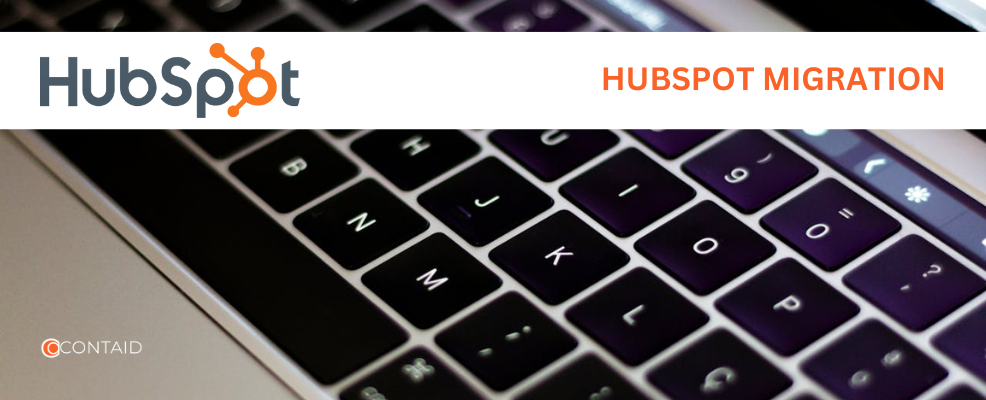Migrating to a new CRM is like moving to a new house. It can be exciting, but if you’re not prepared, things can get messy. HubSpot is a powerful CRM that many businesses are switching to for its marketing, sales, and service features. But to make the most of it, you need a smooth migration plan.
Here’s everything you need to prepare for a successful HubSpot migration from assessing your current CRM to training your team.
1. Assessing Current Data and CRM Setup
Before you pack up your CRM belongings and move to HubSpot, take a good look at what you currently have.
Start with a full audit of your current CRM. Some of the most common CRMs businesses migrate from include Salesforce, Zoho CRM, Pipedrive, Microsoft Dynamics, and Insightly. Make a list of:
- Contacts and companies
- Deals or opportunities
- Tickets or support requests
- Email templates and automation workflows
- Custom fields and data structures
- Integrations and connected tools
Evaluate what’s essential and what’s outdated. There’s no point in migrating old or duplicate data. This is your chance to clean house.
Questions to ask:
- Are there contacts with incomplete info?
- Do we have duplicate records?
- Are we using custom fields that no longer serve us?
- What reports and dashboards are critical?
HubSpot has its own data structure and terminology. Understanding how your current setup maps to HubSpot will help avoid surprises later.
2. Key Preparations Before Migration
Preparation is everything. Once you’ve audited your data, it’s time to get things ready for the move.
Back up your data: Before you do anything, export and save a copy of all your data. Even if the migration is being handled by the HubSpot migration professionals, it’s a smart safety step.
Standardize and clean your data: Remove duplicates, fix inconsistent naming, and fill in missing fields. Consistent data makes the transition smoother.
Decide what to migrate: Not everything needs to be moved. Sometimes, it’s better to start fresh with clean data and just bring over what’s truly valuable.
Review and replicate your processes: Think about how your teams use the CRM. HubSpot might offer a better way to handle your sales funnel or automate follow-ups. Be open to change.
Notify stakeholders: Let your team know what’s coming. Share the timeline and how it might affect their daily work.
3. Developing a Migration Timeline
A successful migration has a clear, realistic timeline. Here’s a sample structure:
Week 1: Audit and Planning
- Review current CRM
- Identify necessary data and processes
- Set goals for the migration
Week 2–3: Data Cleanup and Mapping
- Clean and prep the data
- Define how existing fields will map to HubSpot
Week 4: Test Migration
- Move a small sample of data to HubSpot
- Test and validate the results
Week 5: Full Migration
- Migrate all data
- Verify everything is in place
- Check integrations and workflows
Week 6: Post-Migration Testing and Training
- Test workflows, forms, and reporting
- Train the team
- Collect feedback
Build in buffer time in case things don’t go exactly as planned. A little flexibility goes a long way.
4. Ensuring Data Security During Migration
Data security isn’t just an IT issue—it’s a business priority.
Use secure transfer methods: If you’re doing the migration yourself, use secure methods like HubSpot’s native import tools or trusted third-party migration tools. Avoid emailing spreadsheets with sensitive information.
Control access: Limit who can access data during the migration process. Only team members directly involved should have editing or administrative rights.
Audit logs and activity tracking: HubSpot keeps track of user activity, which helps monitor what’s happening during the migration.
Work with experienced partners: If you’re unsure, consider hiring a HubSpot partner who specializes in migrations. They follow best practices and reduce the risk of errors.
5. Training Your Team for HubSpot Use
A successful migration isn’t just about the data—it’s also about people.
HubSpot is user-friendly, but training is still important. If your team doesn’t understand the system, it won’t be used effectively.
Provide role-specific training: Sales teams need to know how to track deals and use the pipeline. Marketing needs to understand workflows and lists. Support needs to manage tickets.
Use HubSpot Academy: It’s free and offers comprehensive training modules. You can assign courses based on team roles.
Create internal documentation: Customize guides that show your processes within HubSpot. Include screenshots and workflows for clarity.
Encourage feedback: Migration is a change, and people will have questions. Hold Q&A sessions and keep communication open.
Celebrate the launch: Mark the go-live day with a little celebration. Recognize the team effort, it helps with adoption.
Migrating to HubSpot can be a game-changer for your business, but it needs careful planning and execution. From auditing your existing data to empowering your team with training, every step matters.
The good news? Once you’re in HubSpot, you’ll have access to a CRM that can scale with your business, support your teams, and automate key processes.
Take the time to prepare, and your migration won’t just be successful—it’ll be a launchpad for growth.

